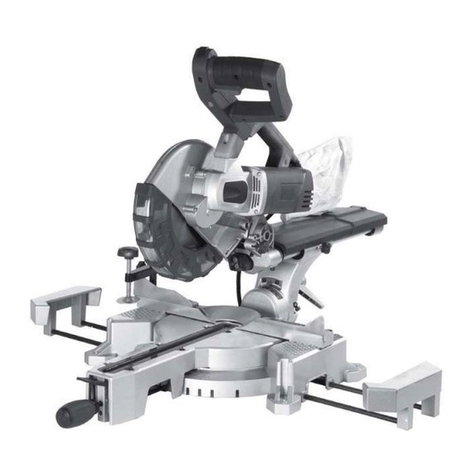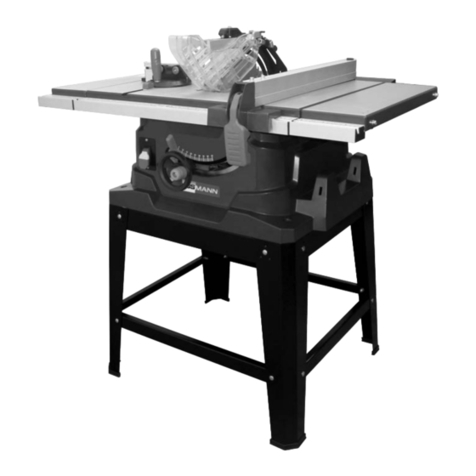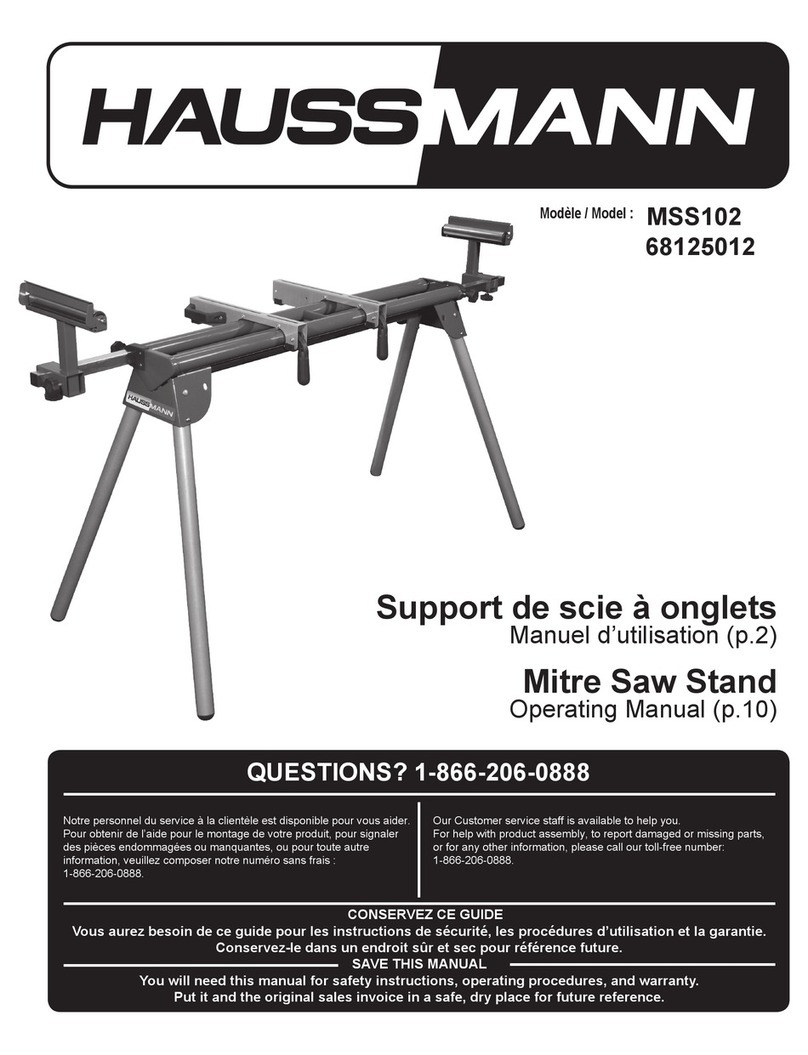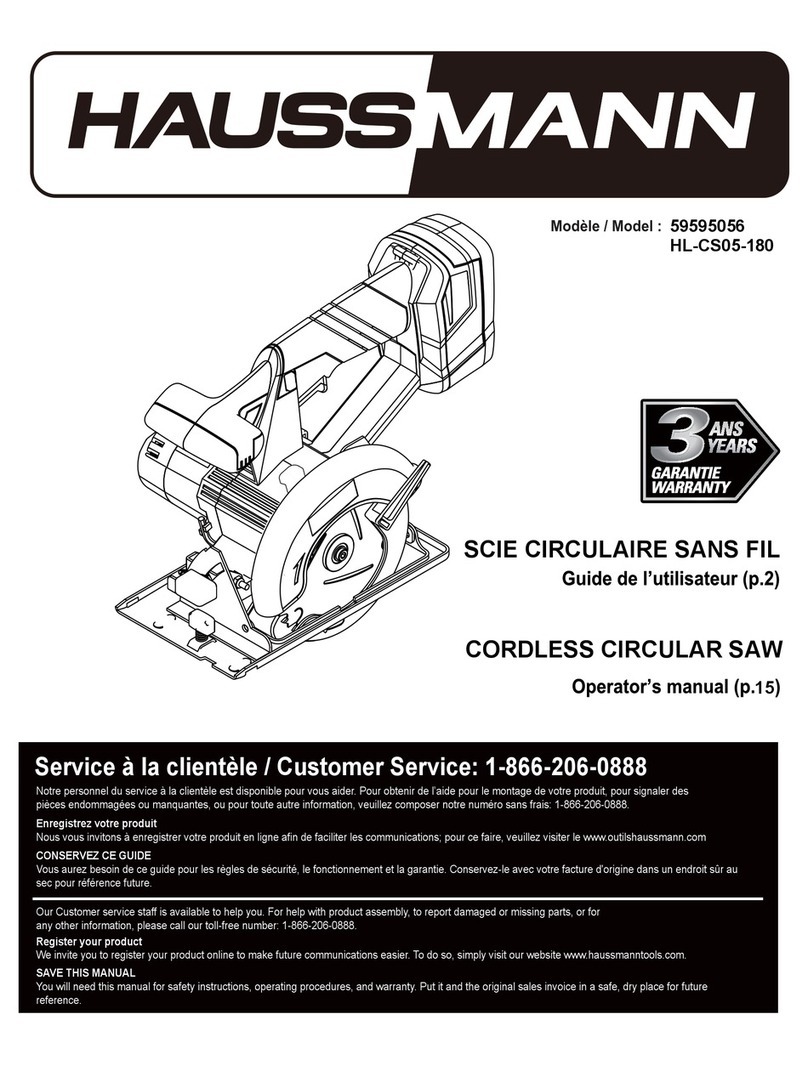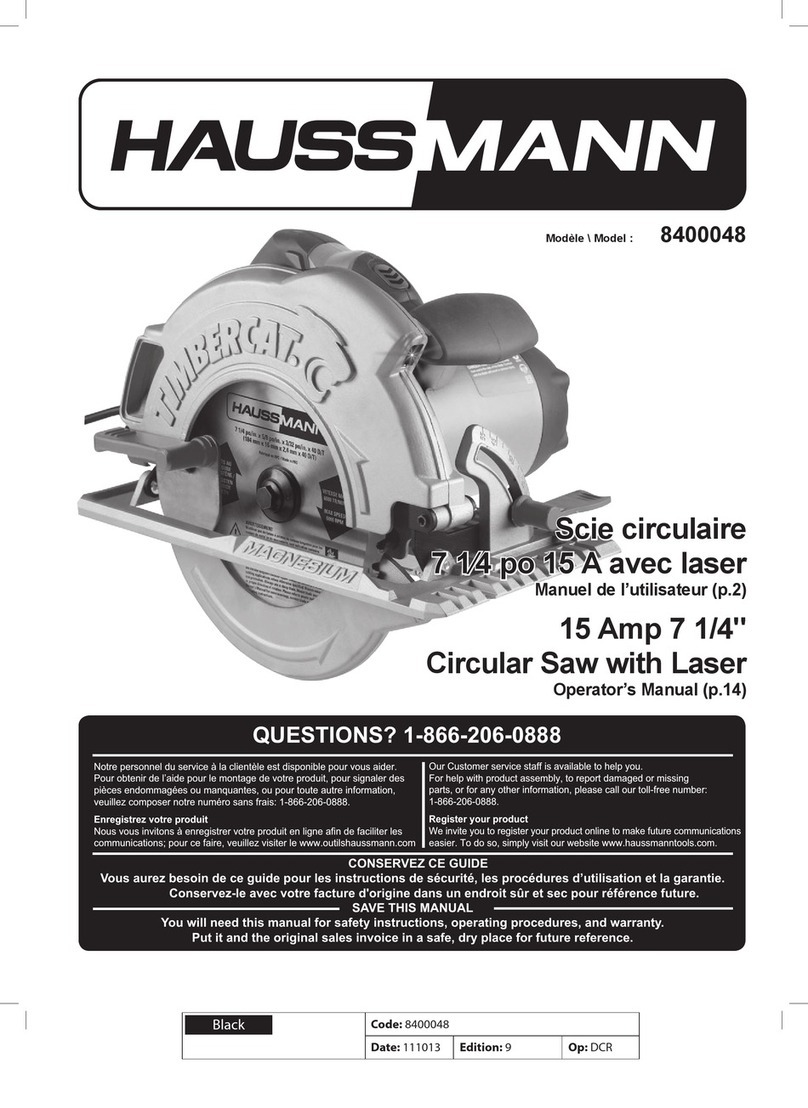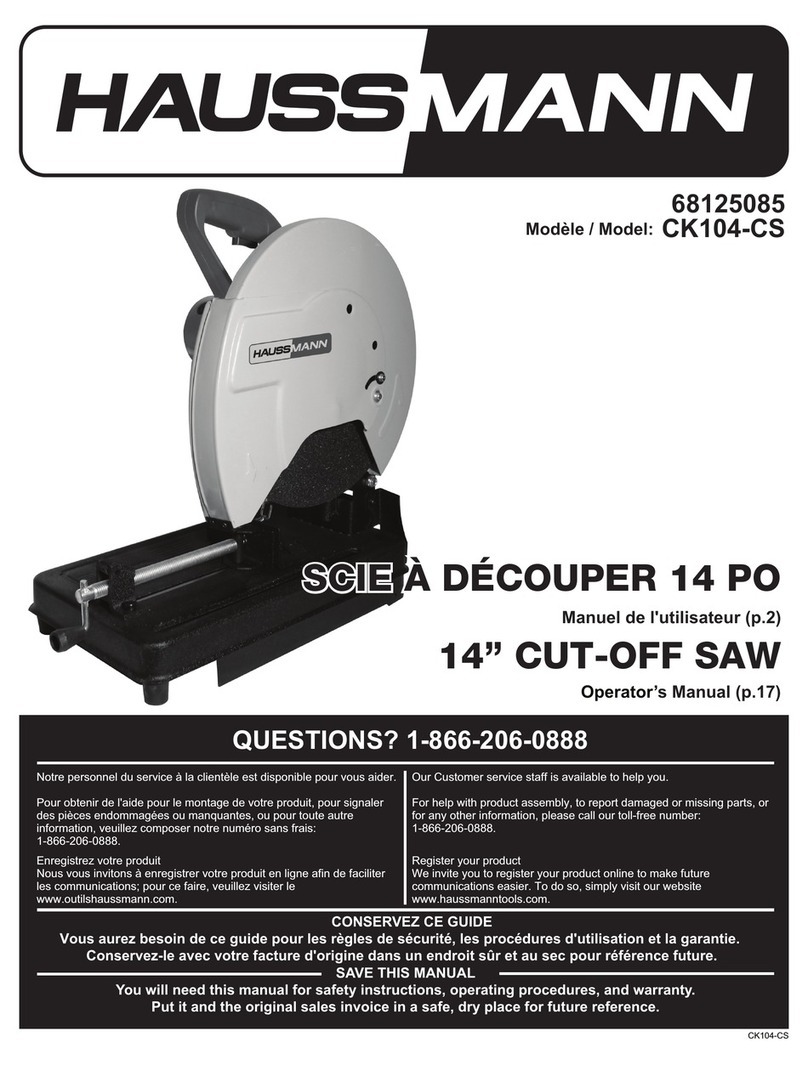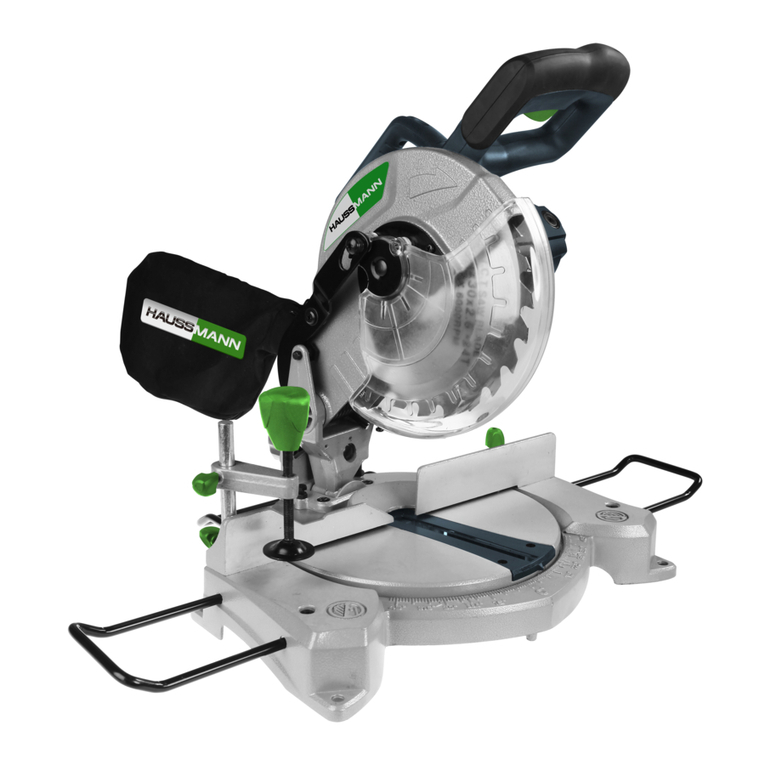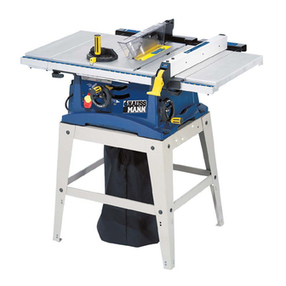
40
GENERAL SAFETY INSTRUCTIONS
BEFORE USING THIS POWER TOOL
Safety is a combination of common sense, staying alert
and knowing how to use your power tool.
To avoid mistakes that could cause serious injury,
do not plug the tool in until you have read and
understood the following.
1. READ and become familiar with the entire
Operator’s Manual. LEARN the tool’s
application, limitations and possible
hazards.
2. KEEP GUARDS IN PLACE and in working order.
3. REMOVE ADJUSTING KEYS AND WRENCHES.
Form the habit of checking to see that the keys
and adjusting wrenches are removed from the tool
before turning ON.
4. KEEP WORK AREA CLEAN. Cluttered areas and
benches can cause accidents.
5. DO NOT USE IN DANGEROUS ENVIRONMENTS.
Do not use power tools in damp locations, or expose
them to the rain or snow. Keep work area well lit.
6. KEEP CHILDREN AWAY. All visitors and
bystanders should be kept at a safe distance from
the work area.
7. MAKE WORKSHOP CHILD-PROOF with padlocks,
master switches or by removing starter keys.
8. DO NOT FORCE THE TOOL: By operating the tool
at the rate for which it was designed, it will do the
job better and more safely.
9. USE THE RIGHT TOOL. Do not use a tool or an
attachment to do a job for which it was not designed.
10. USE PROPER EXTENSION CORDS. Make sure
your extension cord is in good condition. When
using an extension cord, be sure to use one heavy
enough to carry the current your product will draw.
An undersized cord will result in a drop in line
voltage and in a loss of power, which will cause the
tool to overheat. The table on page 43 shows the
correct size to use depending on cord length and
nameplate ampere rating. If in doubt, use the next
heavier gauge. The smaller the gauge number, the
heavier the cord.
POWER TOOL SAFETY
11. WEAR PROPER APPAREL. Do not wear loose
clothing, gloves, neckties, rings, bracelets or any
other jewelry that can get caught in the tool’s
moving parts. Non slip footwear is recommended.
Wear protective hair covering to hold back long hair.
12. ALWAYS WEAR EYE PROTECTION. Any power
tool can throw foreign objects into the eyes,
which can cause permanent eye damage.
ALWAYS wear Safety Goggles (not glasses)
that comply with ANSI Safety standard
Z87.1. Everyday eyeglasses have only impact
resistant lenses. They ARE NOT safety glasses.
NOTE: Glasses or goggles not in compliance with
ANSI Z87.1 could seriously injure you when they
break.
13. WEAR A FACE MASK OR DUST MASK. Sawing
operation produces dust.
14. SECURE WORK. Use clamps or a vise to
hold work when practical. It is safer than
using your hand and it frees both hands to
operate the tool.
15. DISCONNECT TOOLS FROM POWER SOURCE
before servicing, and when changing accessories
such as blades, bits and cutters.
16. REDUCE THE RISK OF UNINTENTIONAL
STARTING. Make sure the switch is in the OFF
position before plugging the tool in.
17. USE RECOMMENDED ACCESSORIES. Consult
this Operator’s Manual for recommended
accessories. The use of improper accessories can
cause cause risk of injury to yourself or others.
18. NEVER STAND ON THE TOOL. Serious injury
could occur if the tool is tipped or if the cutting edge
is unintentionally contacted.
19. CHECK FOR DAMAGED PARTS. Before using
the tool, carefully check the guard or any other part
that is damaged to determine that it will operate
properly and perform its intended function - check
for the alignment of moving parts, binding of moving
parts, breakage of parts, mounting and any other
conditions that may affect its operation. A guard or
any other part that is damaged should be properly
repaired or replaced.
WARNING
!

